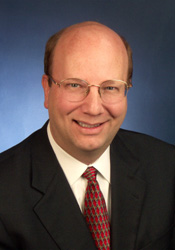NorthEast Radio Watch 12/8/2025: Cichon’s Back in Buffalo
In this week’s issue… Veteran newsman returns - Remembering NY's Leitner, RI's Jones - CT AM saved - Maine AM moves - "Indie" adds suburban signals
In this week’s issue… 15 years later, the state of New York’s broadcast recovery – Boston AM sells – Schilling joins forces with Carr – “Tony” arrives in Utica
By SCOTT FYBUSH
*As another milestone anniversary of the September 11 attacks came and went in NEW YORK over the weekend, perhaps the most remarkable conclusion we can offer in our fifteenth-anniversary update is how little there actually is to update.
 Over the weekend, we reposted the “9/11 Plus One” article that first appeared in this space in 2002, and in doing so we were struck by how optimistic we were back then about the prospects for an improved reconstruction of the broadcast facilities that were destroyed on that terrible September day. At the time, we thought, it would be “no more than a year” before construction was underway – or even complete – on a new tower that might return New York’s TV signals to the heights they’d occupied on the old 1 World Trade Center.
Over the weekend, we reposted the “9/11 Plus One” article that first appeared in this space in 2002, and in doing so we were struck by how optimistic we were back then about the prospects for an improved reconstruction of the broadcast facilities that were destroyed on that terrible September day. At the time, we thought, it would be “no more than a year” before construction was underway – or even complete – on a new tower that might return New York’s TV signals to the heights they’d occupied on the old 1 World Trade Center.
Instead, in a way we could hardly have anticipated back then, a combination of political delays, technical holdups and transformations of the entire broadcasting landscape have left the situation not that much different from the way we left it back in 2002.
At the time, the Empire State Building had been pressed into service as a makeshift replacement home for most of the city’s TV stations, most of them returning to the building they’d abandoned in the 1970s to get a few hundred more feet of height from the new Trade Center site. Today, all but one of the former Trade Center TV signals now broadcasts from Empire, where millions of dollars have been poured into reconfiguring the antenna mast and transmitter rooms while avoiding disruption (as much as possible) to the other FM and TV signals that were already using Empire.
Within the building, former office space on floors 77, 78 and 79 was reconfigured in the years after 9/11 to carve out new transmitter rooms for the stations that needed it. An initial round of antenna reconfiguration for analog TV gave way, as the 2009 switchover approached, to a more comprehensive set of antenna changes that included master antennas for both high-band VHF and UHF digital TV on the mast.
In the meantime, TV broadcasters increasingly seem to have found that “good enough” is good enough. Initial hopes for a 2000-foot super tower in Jersey City faded in the years after 2002, done in by high costs, FAA opposition and, more than anything else, a sense that with more changes yet to come in the TV landscape, a massive investment in over-the-air infrastructure might not be warranted.
 Uncertainty over the future has also kept progress slow at the replacement for the super tower project. Once political obstacles were cleared out of the way and the new 1 World Trade Center tower began to rise from a site next to the old one, developers have found broadcasters slow to sign on to the new project.
Uncertainty over the future has also kept progress slow at the replacement for the super tower project. Once political obstacles were cleared out of the way and the new 1 World Trade Center tower began to rise from a site next to the old one, developers have found broadcasters slow to sign on to the new project.
The broadcast arm of the Durst Organization, which also operates Four Times Square, spent several years marketing the broadcast site at 1WTC before finally winning commitments from CBS, NBC and public broadcaster WNET last year. Even after signing on to put their signals on the new 1WTC mast, which rises to a symbolic 1776-foot tip, it’s still not clear when the first signals (beyond some testing earlier this year) might actually make it to the air from lower Manhattan. (2012 photo courtesy John Lyons/The Durst Organization)
For that, we can blame larger factors – the combination of the FCC’s spectrum repack efforts and the eventual conversion to the new ATSC 3.0 standard mean broadcasters don’t want to invest in building out expensive new transmitter sites on channels they may not even be using within a few short years.
But if progress has been painfully slow when it comes to broadcast development, it’s been on fire when it comes to skyscraper development in general around Manhattan. The Empire State Building (and even more so the somewhat shorter Four Times Square to its northwest) are gradually being dwarfed by skinny, shiny newer buildings that have been poking past the thousand-foot mark.
Those new towers don’t carry broadcast antennas – developers can make more these days by filling top floors with residences that cost many tens of millions of dollars – but they do present the possibility of new multipath and shadowing issues that are making some broadcasters quietly leery about making big new investments at Empire.
While nobody will say so for the record – the fight for broadcast contracts has become both lucrative and intensely secretive – those concerns have no doubt contributed to slowing progress on a new FM antenna system at Empire as well. Amidst the glitz of the celebration last fall of the 50th anniversary of the original Alford antenna system, it went largely unremarked that the current ERI master antenna has now been in use for almost three decades, longer than the Alford saw primary service.
With the migration of most of the former World Trade Center FMs to Empire after 9/11, that ERI antenna and combiner is carrying a lot of weight these days: 16 full-power commercial FM stations depend on it for what’s estimated to be close to half a billion dollars in annual revenue; three more FMs share the “mini-master” that adjoins it on the mast.
Remarkably, even now, one of those former Trade Center FMs, SBS’ WPAT-FM (93.1 Paterson), remains on special temporary authority that must be renewed every six months. Because of co-channel WHYN-FM (93.1 Springfield MA), WPAT can’t be licensed with full spacing at Empire. It remains officially licensed at the ghost site of the old One World Trade Center downtown, and if any commercial FM is likely to move south again someday, it’s probably WPAT-FM. (By contrast, most of the rest of the FMs at Empire would become short-spaced if they moved south, a factor that helps keep them in Midtown.)
 Behind the scenes, the lessons of 9/11 are still being learned by broadcasters. Robust backup facilities are still not as universal as one might expect, but they’re at least more common than they were 15 years ago. Not just in New York but in most major markets, big operators such as iHeart and CBS Radio routinely maintain off-site backup transmitters and studios that would give them much more ability to keep broadcasting if another tragedy like the one in 2001 were to hit.
Behind the scenes, the lessons of 9/11 are still being learned by broadcasters. Robust backup facilities are still not as universal as one might expect, but they’re at least more common than they were 15 years ago. Not just in New York but in most major markets, big operators such as iHeart and CBS Radio routinely maintain off-site backup transmitters and studios that would give them much more ability to keep broadcasting if another tragedy like the one in 2001 were to hit.
On the TV side, especially, planning for disaster recovery has become much more sophisticated. At ABC, for instance, our friend and colleague Howard Price has become something of an evangelist for the importance of maintaining multiple levels of redundancy (and we’re looking forward to hearing him speak on that topic next week at the Radio Show in Nashville!)
But complacency is dangerous – and as we remember the broadcasters who gave their lives atop the World Trade Center, Rod Coppola, Steve Jacobson, Isaias Rivera, Bill Steckman, Don DiFranco and Robert Pattison, we hope their memory and the lessons of that terrible day will not be forgotten.

As we announced a few weeks ago, the 2026 edition of the Tower Site Calendar will be the last.
We began publishing it 25 years ago, and the broadcast landscape is radically different now.
Radio World just ran an excellent article about us if you want to know more.
Once it’s gone, that’s it. We won’t be printing any more.
Thank you to everyone who saw our announcement and rushed to buy it. We appreciate you.
(There are some calendars from previous years if you want more of a tower photo fix — all under $5.)
But don’t wait to get this year’s Tower Site Calendar — buy it now!
We are selling the Broadcast Historian’s Calendar again this year, but we have that in an even smaller quantity — definitely don’t hesitate for that.
And visit the Fybush Media Store to check out our selection of books and videos, too!
[private]
*It’s been three years since China Radio International came to MASSACHUSETTS with Radio One’s lease of WILD (1090 Boston) to a group led by James Su of California. Now Su’s Radio Boston Broadcasting, Inc. is buying the AM signal out from Radio One, ending that company’s 17-year run in the market. It was back in 1999 that Radio One paid $10 million for then-WCAV (97.7 Brockton), and a year later when the company bought WILD from the Nash family for $5 million.
The sale price this time doesn’t even break the $1 million mark: Radio Boston Broadcasting is paying $888,231 to take ownership of the station. That money will come partially from Su, whose Universal Broadcasting Group owns 78% of the company, and partially from AIM Broadcasting, which owns 22%. AIM, in turn, belongs to John and Greg Douglas – and if that first name sounds familiar, it’s because John Douglas was a radio owner in Boston back in the 1990s, when his Achievement Radio Holdings had WBPS (890).
 *It’s not exactly the magic combination that was the 2004 Red Sox (ah, the 2004 Sox…), but Curt Schilling has found a new team to join. The Sox pitcher, whose outspoken political views got him tossed from his ESPN job, started a three-hour Saturday morning talk show over the weekend. The new show is being distributed over the Howie Carr Radio Network, the self-syndication setup through which Carr reaches most of New England. It’s not clear yet how much of Carr’s network is on board with the new weekend offering beyond his Boston flagship, WRKO (680), and WFEA (1370/99.9) in Manchester, NEW HAMPSHIRE.
*It’s not exactly the magic combination that was the 2004 Red Sox (ah, the 2004 Sox…), but Curt Schilling has found a new team to join. The Sox pitcher, whose outspoken political views got him tossed from his ESPN job, started a three-hour Saturday morning talk show over the weekend. The new show is being distributed over the Howie Carr Radio Network, the self-syndication setup through which Carr reaches most of New England. It’s not clear yet how much of Carr’s network is on board with the new weekend offering beyond his Boston flagship, WRKO (680), and WFEA (1370/99.9) in Manchester, NEW HAMPSHIRE.
Karen Kiley has moved from mornings to middays at Townsquare’s WOKQ (97.5 Dover), leaving an opening to fill alongside Kira Lew on the morning show.
*In VERMONT, there’s a new signal on the air in Poulteney. Clay Ashworth’s Northway Broadcasting filed a last-minute downgrade to put WDKM (92.5) on the air with just 100 watts/-249′ from a Main Street rooftop on Friday, just ahead of the construction permit’s scheduled expiration tomorrow. The new WDKM is playing oldies, we’re hearing.
The debut of WDKM displaced a Vermont Public Radio translator in nearby Rutland: VPR Classical’s W223AV (92.5) up on Grandpa’s Knob moved to 99.1 last week to make room for the new Poulteney signal. VPR Classical also added a new signal just outside Burlington: the former WWPV (88.7 Colchester), now WVTX, has returned to the air with a 100-watt signal from the VPR studios at Fort Ethan Allen.
 *Steve “Corm” Cormier is leaving mornings at WCVT (101.7 Stowe)/WEXP (101.5 Brandon) after Tuesday’s show. The veteran morning man announced in a clever (and cleverly sponsored) video post last week that he’s going to be focusing on his day job as sales director for the Radio Vermont Group – and that his replacement will be J.D. Greene, who’d been doing mornings over at “Froggy” WWFY (100.9 Berlin).
*Steve “Corm” Cormier is leaving mornings at WCVT (101.7 Stowe)/WEXP (101.5 Brandon) after Tuesday’s show. The veteran morning man announced in a clever (and cleverly sponsored) video post last week that he’s going to be focusing on his day job as sales director for the Radio Vermont Group – and that his replacement will be J.D. Greene, who’d been doing mornings over at “Froggy” WWFY (100.9 Berlin).
Over at the Vox cluster in Burlington, Eric Forand is leaving afternoons at WEZF (Star 92.9), headed for a new day job outside of radio. (Need a new Kia?) He’ll still be heard weekends on WEZF and its sister stations.
Corm 101 the One
*In Bangor, MAINE,, WWNZ (1400 Veazie) has changed calls to WCYR. While we’re just getting word of the change this week, it apparently took effect in early August, when Chuck Begin took control of the station from the estate of the late Dan Priestly and flipped the format to classic country as “Country Road.”
*Radio People on the Move in PENNSYLVANIA: Karen Vaughn is inbound to Radio One’s Philadelphia cluster (WRNB/WPPZ/WPHI) to become operations manager, a role she’ll assume next Monday. She’s been PD of Radio One’s cluster in Indianapolis, where she’s also been doing afternoons at WTLC-FM (106.7).
A translator sale at an unusually high price these days: GEOS Communications sells W233CB (94.5 Hazleton) to Southern Belle LLC, which plans to move its $70,000 purchase northwest to Wellsboro, where it will relay WNBT (1490).
*In NEW JERSEY, David A. Dein gets a bump up from production assistant/morning show producer to assistant PD at WAWZ (99.1 Zarephath), where he’ll also be heard on the overnight hours.
 *Who’s “Tony” and what’s he doing in Utica, NEW YORK? That’s Galaxy’s new HD-fed translator format at W256AJ (99.1), the high-powered Smith Hill signal that had been simulcasting ESPN with WTLB (1310) and its Mohawk Valley sister stations.
*Who’s “Tony” and what’s he doing in Utica, NEW YORK? That’s Galaxy’s new HD-fed translator format at W256AJ (99.1), the high-powered Smith Hill signal that had been simulcasting ESPN with WTLB (1310) and its Mohawk Valley sister stations.
The new format launched at 11 Thursday morning, fed by the new HD2 signal of WKLL (94.9 Frankfort); it’s a variety hits format that’s launching with 10,000 commercial-free songs. (As for ESPN and WTLB, it will return to the FM dial before long on the translator Galaxy is buying from Vermont.)
*We’re saddened indeed by the death on Friday morning of Bill Nojay, the Rochester lawyer-turned-politico-turned-talk host who’d been heard on WYSL (1040 Avon) and a small network of talk stations around the Finger Lakes and western New York.
Nojay was in the WYSL studio for his show on Thursday, just hours before the Rochester media lit up with news that he’d taken his own life next to his family’s cemetery plot. In addition to his work at WYSL, Nojay was approaching a contested Republican primary to retain his state Assembly seat – and the Democrat and Chronicle reports he was facing the prospect of criminal charges for embezzling money from a law client with whom he’d been working on a development project.
 After reporting the news by way of its WHEC (Channel 10) noon TV news simulcast on Friday, WYSL went to repeats of other programming in what would have been Nojay’s slot. It’s not yet clear how the station will fill the void left by what had been its star on-air personality; a statement from the station over the weekend said owner Bob Savage and his staff were still too shocked from the news to make any further comment yet.
After reporting the news by way of its WHEC (Channel 10) noon TV news simulcast on Friday, WYSL went to repeats of other programming in what would have been Nojay’s slot. It’s not yet clear how the station will fill the void left by what had been its star on-air personality; a statement from the station over the weekend said owner Bob Savage and his staff were still too shocked from the news to make any further comment yet.
Nojay was just 59; he leaves behind his parents, his wife and three children.
*Veteran Albany talent Bob “Wolf” Wohlfeld didn’t last long at his latest gig. In March, the longtime ex-WPYX morning man started talking sports in the afternoon at Townsquare’s WTMM (104.5 the Team), co-hosting with Jeff Levack. The Albany Times Union reports Wohlfeld was abruptly fired from the show Wednesday morning; no replacement has been named yet.
Over at Albany Broadcasting, Mike Ryan is the new night guy at WFLY (92.3), taking over a shift he’d been doing on an interim basis for the last month. (The previous night guy, Bill, is now mornings on sister station WAJZ 96.3).
In the Buffalo market, Delaware-based Priority Media wants more power on the translator it just moved. Priority runs two translators around Buffalo for its religious WXHL (89.1 Christiana DE), W201BE (88.1 Buffalo) and what used to be W206CA (89.1 Grand Island). The Grand Island translator was displaced by last year’s sign-on of CKYY (89.1 Welland) across the border in Canada, and it’s now 90-watt W295BW on 106.9. Now it’s applying to go to 150 watts at the same Grand Island transmitter location, using a directional antenna aimed east toward the Tonawandas.
*In the Ithaca market, Romar Communications now has a callsign for the AM signal it’s been trying to put on the air for most of this century. Romar’s Robert Lynch finally got a CP for 750 in Lansing in April, with 1200 watts day/720 watts night, and now the station will be called WTRS.
*In CANADA, Canadian Radio News reports CFDA (101.9 Victoriaville QC) has dropped its simulcast of “Passion Rock” from CKLD (105.5 Thetford Mines QC), replacing it with a local AC format as “Plaisir 101.9.”
[/private]
From the NERW ArchivesYup, we’ve been doing this a long time now, and so we’re digging back into the vaults for a look at what NERW was covering one, five, ten, fifteen and – where available – twenty years ago this week, or thereabouts. Note that the column appeared on an erratic schedule in its earliest years as “New England Radio Watch,” and didn’t go to a regular weekly schedule until 1997. One Year Ago: September 14, 2015 *There were two big post-Labor Day bombshells that we reported in our NERW Extra last week: RHODE ISLAND Public Radio’s big-name hire of former WBEZ (91.5 Chicago) leader Torey Malatia to be the Ocean State outlet’s new general manager – and the Meredith/Media General merger, which will have huge consequences in western MASSACHUSETTS and CONNECTICUT. Until Malatia settles in at RIPR, there’s not that much more we can add to that story, but there’s a lot more that we can tell you this week where Meredith and Media General are concerned. We covered the basics in our Extra: in the Springfield market, Media General’s NBC/CW WWLP (Channel 22) and Meredith’s ABC/Fox WGGB (Channel 40) and CBS WSHM-LP (Channel 21) combine to form the entire commercial TV landscape. In Hartford/New Haven, Media General’s ABC WTNH (Channel 8)/My WCTX (Channel 59) and Meredith’s CBS WFSB (Channel 3) compete with NBC’s WVIT (Channel 30) and Tribune’s Fox WTIC-TV (Channel 61)/CW WCCT (Channel 20). It’s a given that the merged MG/Meredith will have to shed stations in those markets, as well as in four others (Nashville, Greenville/Spartanburg/Asheville, Norfolk, Portland OR), to stay within FCC ownership caps and to keep the Justice Department’s Antitrust Division happy. *With the departure of most of Boston TV’s star anchors from the 1980s and 1990s, Maria Stephanos was one of the last really big names on Hub TV. So when the 18-year veteran anchor at WFXT (Channel 25) announced last week that Friday would be her last day on the 6, 10 and 11 PM newscasts, the market was buzzing. Neither WFXT nor Stephanos is saying much about the split; “I am beyond blessed, to deliver the news in the place where I grew up,” said Stephanos in a statement issued by Fox 25, which hasn’t yet named a new anchor team. Is her departure linked to the recent change of ownership at WFXT, which longtime owner Fox Television Stations swapped to Cox Media Group? And will she resurface somewhere else in town, perhaps at WFXT’s archrival WHDH-TV (Channel 7)? We’ll be following the story closely…
Five Years Ago: September 12, 2011 *From the moment sports talk began spreading to FM a few years back, the rumor mill in MASSACHUSETTS has been churning: when will Entercom migrate WEEI, one of the nation’s most consistently successful sports outlets, from 850 on the Boston AM dial to a new home somewhere on FM? It didn’t happen five years ago, when Entercom added another FM signal (now WKAF 97.7) to its Boston cluster. It didn’t happen two summers ago, when CBS upped the Boston sports ante by launching its own FM sports entry, “Sports Hub” WBZ-FM (98.5). It didn’t happen later that fall, when the collapse of “ESPN Boston” WAMG (890) made the ESPN Radio affiliation available, nor did it happen a year later, when another rumor made the rounds about Entercom buying WFNX (101.7) as part of a deal that would have shifted WEEI to FM.
*The week’s other massive story, of course, was the monumental flooding that devastated parts of central PENNSYLVANIA and NEW YORK‘s Southern Tier. For radio and TV stations in the region, the flooding provided an opportunity to demonstrate, in a dramatic way, the importance of broadcasting in keeping the public safe and informed, even as the floodwaters threatened broadcast facilities all along the Susquehanna River and its tributaries.
As we write this week’s column Sunday night, there’s even worse news: WEBO’s downtown studios, in the storefront of a century-old building, have been condemned due to problems with the building’s crumbling foundation that reportedly have the first floor on the verge of collapse. Dave and his crew (including contract engineer Mark Humphrey) managed to get most of the station’s gear out of the building undamaged, but it will be a challenging few months ahead as WEBO moves first into a temporary studio this week and then seeks new permanent digs on higher ground. *Radio One completed its format swap in Philadelphia last week: with adult R&B WRNB now installed on the cluster’s biggest signal, the Media-licensed class B facility at 100.3, the former home of WRNB has picked up the hip-hop format that used to be on 100.3. WPHI-FM is now at 107.9, the Pennsauken, N.J.-licensed class A signal that transmits from the One Liberty skyscraper in Center City Philadelphia, and as of Friday it’s now “Hot 107.9,” with Sarah O’Conner as PD and the syndicated Ricky Smiley show in morning drive. *Most of the big radio news in CANADA over the last two weeks came out of Montreal, including the September 6 relaunch of Astral’s CFQR (92.5) as rhythmic AC “The Beat, 92.5.”
The hotter music mix comes with new call letters as well: the station has become CKBE. *Over on the AM dial, our Labor Day update already brought you the news of Cogeco’s decision not to wait for the CRTC to decide whether it can relaunch the old CINF (690) as a French-language all-traffic station. With the powerful lure of $1.5 million a year in provincial transportation ministry funding dangling in front of it, Cogeco pulled the plug on French-language sports CKAC (730) last Tuesday, replacing it with traffic as “Radio Circulation” and moving some of CKAC’s sports hosts to talker CHMP (98.5), now the only commercial mainstream spoken-word signal broadcasting in French in Montreal. Ten Years Ago: September 11, 2006 There were two surprises in western NEW YORK when CBS Radio announced its exit from the Buffalo market last week – first, that the buyer of CBS’ one AM and four FM stations wasn’t Clear Channel, Citadel, Entercom or Randy Michaels, but rather Regent Communications, and second, the price tag, a whopping $125 million. That’s about three times what Entercom is paying for CBS Radio’s four-FM cluster in nearby Rochester, a market of similar size, but it gets Regent into Buffalo in a big way. For its money (nearly half the entire market capitalization of the rest of Regent), the company gets the market’s dominant country station, WYRK (106.5), as well as a very successful AC, WJYE (96.1), a pioneering urban signal, WBLK (93.7 Depew), a strugglng “Jack” adult hits station, WBUF (92.9) and a litlle classic-country AM, WECK (1230 Cheektowaga). Buffalo becomes, by a pretty significant margin, the largest market in the Regent family, but it also makes for a nice combination with Regent’s existing upstate clusters in Watertown, Utica and Albany. In all three markets, just as in Buffalo, there’s a dominant country signal in the cluster (“Froggy” WFRY Watertown, “Big Frog” WFRG Utica and WGNA in Albany), so it’s a good bet that Regent won’t make many changes at WYRK when it takes control there. Few changes are likely at WJYE or WBLK, either – but the rumor mills are already hard at work about what Regent might do with WBUF if it pulls the plug on “Jack.” At the other end of the Thruway, the Albany market was (pardon the pun) abuzz last week about the defection of the WYJB (95.5) morning team of Chuck and Kelly to Regent’s WABT (104.5 Mechanicville). They’ll start at “The Buzz” tomorrow, but they won’t be on 104.5 for long. Last week, Regent confirmed the long-swirling rumors that the “Buzz” modern AC format will move to its new Albany-market entry, WNYQ (105.7 Malta), when that station signs on sometime soon. Expect 104.5 to simulcast with 105.7 for a while, as Regent transitions listeners to the new frequency. (No word yet on what might appear on 104.5 when the transition is complete.) Fifteen Years Ago: September 10, 2001 The TV dial in southern MAINE will be doing some serious spinning on October 7, with some help from Pegasus Broadcasting. After more than a decade as a Fox affiliate, WPXT (Channel 51) in Portland will drop that affiliation in favor of the smaller WB Network, seen until now on LMA partner WPME (Channel 35) in Lewiston as a secondary affiliation. The move appears to be a Pegasus corporate decision, with fellow Fox affiliate WDBD (Channel 40) down in Jackson, Mississippi making the same switch on the same day. Why? NERW suspects an attempt to reap more affiliate compensation from Fox, which will now be left with no broadcast outlet anywhere in the Pine Tree State. To fill the gap, Time Warner has already announced that it will pick up the national FoxNet feed, which will appear on cable channel 14 for customers in Portland and vicinity. Elsewhere in the state, Fox will now have to negotiate with smaller local cable companies for carriage (most had been picking up WPXT via microwave relay for years). And for viewers without cable, it looks as though they’ll have to get used to life without Homer, Scully, Ally and half the Sunday NFL schedule (unless, of course, other Maine network affiliates strike deals with Fox to pick up some of the network’s sports). The big news in the Granite State over Labor Day came courtesy of a Massachusetts broadcaster: Ted O’Brien, the veteran news voice of WNAC-TV, WRKO, WABU and now WBUR-FM (90.9 Boston), who went hiking in the White Mountains on Sunday (Sept. 2) and didn’t come back right away. A search that lasted through two nights ended Tuesday morning when O’Brien was found, tired but safe and apologetic about his unintentional adventure, which began when he wandered off the trail over Attitash Mountain. O’Brien admitted he wasn’t properly prepared for the hike and had failed to anticipate how long it would take. And radio people being radio people, we hear his return to WBUR later in the week found a mock press release attached to his computer, announcing O’Brien’s appointment as head of the Boston University branch of the Appalachian Mountain Club! All kidding aside, we’re as relieved as anyone else to be able to report a happy ending to this story, which sparked a brief holiday-weekend media circus in Boston. Twenty Years Ago: September 11, 1996 Hundreds of mourners turned out Wednesday afternoon to remember Boston radio legend Sunny Joe White. The 42-year old veteran of WILD, WZOU, WVBF, and most notably WXKS-FM was found dead in his Boston apartment last weekend, apparently of a heart attack. White came to Boston in 1977, near the beginning of a radio career that started at little WGIV in his native Charlotte, N.C. After two years at urban WILD (1090), White joined Rich Balsbaugh and the rest of the team that was launching “Kiss 108,” WXKS-FM in Medford. First as morning jock/PD and later as evening jock/PD, White helped shape the disco sound that pushed the former WWEL-FM from worst to first. White’s later career was checkered, marred by frequent allegations of drug use (which the Boston Herald’s Dean Johnson had the guts to mention in his obit) and a variety of stints at several smaller stations. After leaving Kiss, White spent some time programming and consulting rival CHR WZOU (94.5, now WJMN). The early 90s found him doing evenings on WVBF (105.7) during its “Boston 105” phase. That gig ended when WVBF became country WCLB in early 1993, and White left local radio for a time. He was just starting to make a comeback at the time of his death, with consulting and on-air work at WILD, and rumors of a new partnership with Balsbaugh to start a brand-new radio group. White was remembered Thursday night with an hour-long special on Kiss-108, which your NERW regrettably missed. I’d be interested in hearing from anyone with a tape of that broadcast. The Cape Cod airwaves just keep shifting ’round, and the latest changes come at the top of the dial. Classical WFCC (107.5 Chatham) was recently purchased by Charles River Broadcasting, and as of this morning, WFCC’s entire air product is emanating from Charles River’s WCRB 102.5 Waltham-Boston. It’s not exactly a simulcast; though both stations will be playing mostly the same music with the same hosts, the on-air product will be customized for each station. WFCC goes 24 hours as a result of the change (the station used to sign off at midnight daily), and both stations get a new DJ lineup. Laura Carlo moves from afternoon news duty to mornings, working live 6am-noon and on tape from noon till 1. Ray Brown moves from mornings to afternoons, working the 1pm-7pm shift. And Larry King (a different one!) will be heard 7pm-6am, with overnights on tape. WFCC’s former airstaff has been offered work as salespeople for WCRB. |
In this week’s issue… Veteran newsman returns - Remembering NY's Leitner, RI's Jones - CT AM saved - Maine AM moves - "Indie" adds suburban signals
In this week’s issue… Scripps stations face takeover - Sinclair moves more affiliations - CT stations sold - Maine AM surrendered - Remembering WVBR's Shapiro, WABC's Morgan
In this week’s issue… CT TV legend succumbs to cancer - Remembering PA's Adams - FCC still stalled by shutdown - Pittsburgh morning host exits
In this week’s issue… FCC faces reopening challenges - Veteran Boston anchor retires - Morning shift in Toronto - NYC FMs expand reach